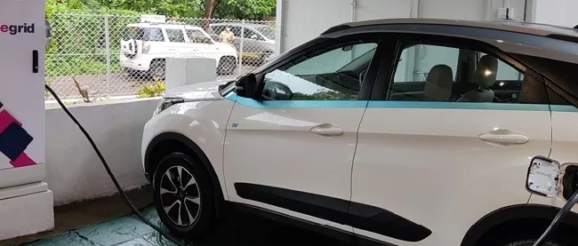Innovation and adoption will lead India’s EV evolution – EQ Mag

Spurred by steadily rising demand and proactive government incentives, India’s electric vehicle (EV) industry has shown exponential growth in the past two years. Domestic four-wheeler EV sales in 2022-23 are set to cross the 60-65,000 mark.
The global embrace of clean energy has catalysed this movement. Customers too, besides being environmentally conscious, are opting for EVs because of their better operating costs, ease of fuelling (with home charging stations and a slowly growing charging network), and attractive range and performance offerings. To sustain this enthusiasm, auto players have geared up to diversify their EV portfolio, promising new models and superior performance.
The value of innovation: To trace the potential evolution of EV technology, we must look at its basics. The present market is dominated by NCM (nickel manganese cobalt) and LFP (lithium iron phosphate) batteries. Top auto players are trying to innovate at the battery level, striving to create power-packs that are inexpensive, energy-dense and light. Incremental improvements can expect to be supplemented with chemistry breakthroughs.
Besides looking at the core technology involved in powering electric cars, we must also scrutinize the production, distribution and consumption processes. The pandemic reinforced the value of a resilient supply chain, and we must integrate these learnings with new paradigms for an EV ecosystem. Proper research on composite materials and assembly innovations, along with innovative technological and design alternatives to overcome a shortage of raw materials, would help immensely. Creating indigenous capacity for in-demand items such as batteries and semiconductors will eventually help plug problems arising from import dependence.
India’s move towards electrification must be in consonance with a broad move towards digitization and overall sustainability. Using circular manufacturing practices, recycling batteries and adopting a robust digital framework to deliver visibility across the supply chain will be critical in smoothening our move towards electric mobility. Virtual connectivity and advanced technologies offered through artificial intelligence (AI) and Internet of Things (IoT) can help elevate customer experiences while maximizing product efficiency and performance. Connected EVs offer enhanced safety and data analysis tools that track a vehicle’s productivity, besides alerting customers of the nearest charging stations and helping them navigate roads in real-time. Data gathered from the connected database on driving and usage patterns can assist in optimizing battery life and raising efficiency.
The transformative possibilities of digital automotive twins—i.e., virtual replicas of cars that comprise every aspect of a real car, including its physical body, software and mechanics, can revolutionize the way automaker’s function. Digital twins offer myriad possibilities, allowing manufacturers to test products, judge manufacturing capabilities, train employees and analyse real-time failure modes based on customer usage patterns to elevate customer service as well as the speed and quality of car development. The application of Industry 4.0 concepts will also allow digital product development frameworks that would ensure faster movement towards sustainable e-mobility.
Another front where virtual technology could have a game-changing impact is on EV charging. Smart charging, where the EV and charging device share a data connection and are connected to the cloud, essentially means adapting the charging cycles of EVs to the needs of vehicle users and the power system. This provides a valuable way of optimizing the charging process, by integrating EVs that are being charged at the same station and taking into account energy availability and customer preferences. Ultimately, this could ease the strain on the power grid in general and also save car users money.
With such exciting possibilities in the field, EV optimism rules high. However, it is also necessary for auto-sector original equipment manufacturers to mitigate possible threats to privacy and customer safety through a comprehensive cybersecurity framework.
The EV roadmap adopted by Tata Motors is the result of a planned approach taken from a nascent stage. The step-by-step strategy we adopted started from restructuring models at the component level, which led to the introduction of EVs in our portfolio that are classified as first-generation Tata EVs. Through this strategy, we introduced Nexon, Tigor and Tiago EVs, judged as the right package for consumers aspiring to go electric. These products have played a significant role in helping the country overcome hurdles in EV uptake. Tata’s strategy now is to let second- and third-generation vehicles (unveiled as the Curvv and Avinya respectively) showcase our capacity for disruptive solutions in both manufacturing and products offerings.
Catalysing EV growth: Positive word-of-mouth from existing customers, combined with an array of aspirational yet accessible product offerings, should help propel EV demand even further. Going ahead, leading automakers are expected to unveil a range of modern EV offerings to meet contemporary needs. Tata Motors itself has committed to launch 10 new EVs by 2026. Hastening our embrace of a clean-mobility future will involve not only going electric, but also reaching for innovative battery technologies and stronger supply networks along with digital connectivity. At the heart of our pursuit, as always, we must aim to deliver unmatched and unhindered customer experiences.
